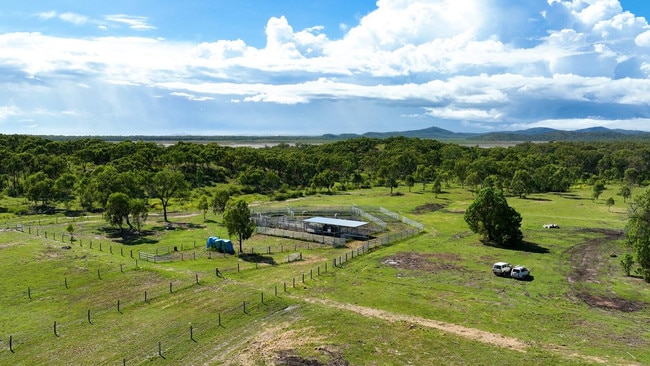Queensland government buys Spadely Station on Curtis Island for conservation estate
A unique cattle station on a central Queensland island has been added to the state government’s “protected areas” with plans to turbocharge an eco-tourism venture.

Prime Site
Don't miss out on the headlines from Prime Site. Followed categories will be added to My News.
The state government has bought a unique cattle station on an island off the Queensland central coast which it will add to its protected areas estate.
In a Queensland first-partnership, the Palaszczuk Government has purchased Curtis Island’s 1500ha freehold Spadely Station from Bakara Investments, owned by childhood friends and Rockhampton businessmen John Morris and Pat O’Driscoll, for an undisclosed sum.
The Queensland Parks and Wildlife Service will partner with Bakara to boost eco-tourism and visitor numbers on the island, north east of Gladstone.
Bakara Investments currently runs an eco-tourism operation on land adjacent to Spadely Station which is in the island's north.
Mt Morris said he and Mr O’Driscoll were excited with the deal.
“After years of dreaming our two families have finally begun a legacy project at Cape
Keppel Beach,” he said.
“We now offer a boutique eco-tourism retreat on 467ha adjacent to the former cattle station.
“Pat and I are thrilled to be working with the minister and her team to realise our dream and
advance the exciting projects before us within the conservation park.”

The northern part of Curtis Island is controlled mostly by Queensland National Parks and the land on Spadely Station includes estuarine wetlands and habitat for migratory birds and threatened fauna species, such as the false water-rat and the Capricorn yellow chat.
The property is within the Great Barrier Reef World Heritage Area and its shoreline supports
nesting habitat for the vulnerable flatback turtle.
The acquisition – through brokers Knight Frank – will also enable the gradual de-stocking of Spadely Station which will make the northern part of Curtis Island free of domestic stock, helping to ensure the protection of the highly significant wetlands and habitats.
The station was once owned by visionary cattle baron Sir Graham McCamley and family. The property was restored to its former glory by Mr Morris and Mr O’Driscoll who had spent about $8m in upgrades.
They purchased it from Dutch real estate investor Universal Partners who paid $10m for 25 freehold titles which at the time covered 2680ha.
The state government’s purchase of Spadely Station is the first eco-tourism adjacency acquisition since the release of Queensland’s Protected Area Strategy 2020-2030 and Ecotourism Plan for Queensland’s Protected Areas 2023-2028.
It was funded under the Palaszczuk Government’s $262.5m investment to expand and manage Queensland’s protected areas
The purchase of Spadely Station also complements the Palaszczuk Government’s $6m Great Barrier Reef Island Arks Acquisition project which increases reef island protection by acquiring high conservation value islands (or parts of them) to add to Queensland’s
protected area estate.

Queensland environment minister Leanne Linard said Curtis Island remained one of central Queensland’s hidden secrets, with wind-sheared scrublands, diverse birdlife and pristine beaches.
“We are looking forward to working with Bakara Investments to maximise every opportunity
to enhance the eco-tourism experience on the island and make it a first choice for people
looking to enjoy beautiful natural surroundings off the central Queensland coast,” she said.
“We will soon engage a consultant to facilitate the eco-tourism master planning project that
will explore, design and guide future conservation, restoration and eco-tourism opportunities
across Curtis Island.”
Tourism minister Stirling Hinchliffe said there was a global appetite for more immersive, meaningful eco-tourism experiences and the purchase of Spadely Station will help draw those visitors to Curtis Island.
“Eco-tourism is central to the Palaszczuk Governments industry led Towards Tourism 2032
strategy, that invests in Queensland’s unique and pristine visitor destinations, supporting
good local tourism jobs while celebrating our great lifestyle.”





